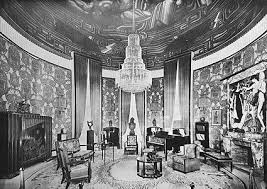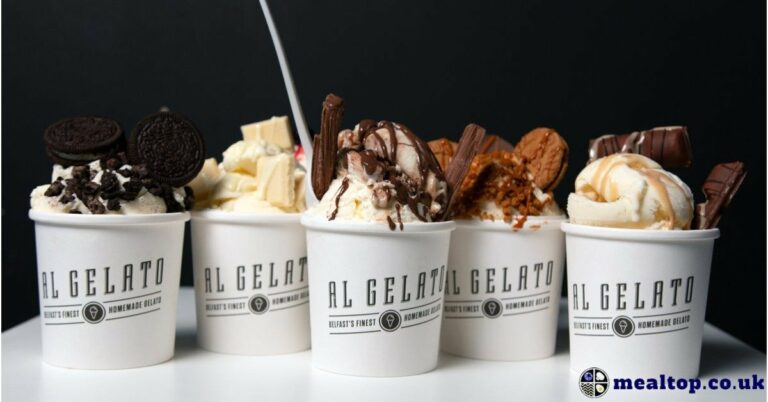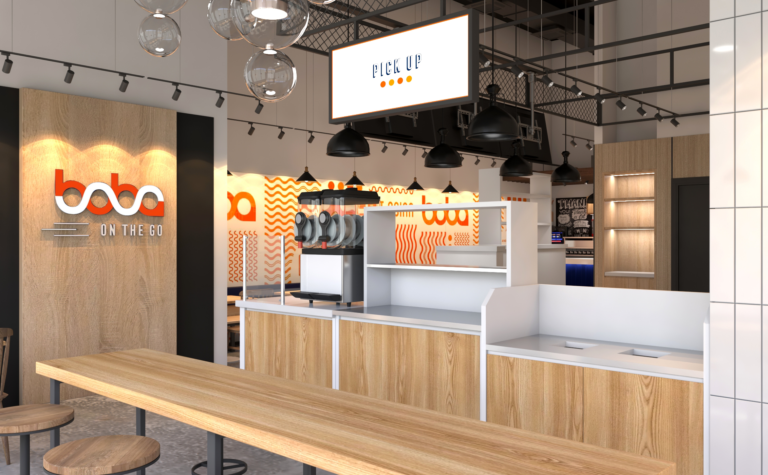The Origins and Evolution of Art Deco in Dining
Art and deco have long been celebrated for their ability to transform spaces, evoking both elegance and emotion. In the world of restaurants, where ambiance is as important as the cuisine served, these design elements play a crucial role. Over the decades, the incorporation of art and deco has redefined how diners experience a meal, turning a simple restaurant visit into an immersive cultural experience.
Art Deco emerged in the 1920s and 1930s as a design movement that embraced modernity, glamour, and luxury. Characterized by bold geometric forms, lavish ornamentation, and a fusion of traditional craft motifs with modern materials, Art Deco quickly became synonymous with sophistication. Early adopters in the restaurant industry recognized that a well-designed space could elevate the dining experience. Restaurants began to integrate sleek lines, mirrored surfaces, and metallic accents, all of which captured the zeitgeist of an era that prized innovation and forward-thinking aesthetics.
The movement was not only a stylistic choice but also a statement—a way for establishments to signal that they were in tune with the evolving cultural landscape. The influence of Art Deco can be seen in the design of iconic diners and upscale eateries that emerged during the mid-20th century. Their interiors were meticulously crafted to reflect a sense of opulence and modernity, often featuring bespoke lighting fixtures, intricate murals, and striking sculptures that conveyed a narrative of artistic evolution.
Creating an Immersive Dining Experience
The incorporation of art in restaurants goes beyond mere decoration; it is a deliberate effort to create a multisensory dining experience. Art installations, whether they are contemporary paintings, mixed-media sculptures, or digital art displays, serve as conversation starters and focal points within the dining space. They encourage patrons to engage with their surroundings, fostering a unique ambiance that blends the visual with the culinary.
Art and deco, when combined, contribute to an atmosphere where every detail is part of a larger story. The geometric patterns and reflective surfaces of Art Deco can enhance the natural light within a space, creating dynamic shadows and highlights that change throughout the day. This interplay of light and form not only beautifies the space but also influences the mood of the diners. A well-lit room with strategically placed art pieces can evoke feelings of warmth and welcome, while also stimulating the senses in subtle, yet impactful ways.
The Role of Color, Texture, and Materials
One of the defining characteristics of Art Deco is its sophisticated use of color and texture. Restaurants that embrace this style often utilize a palette that includes deep hues—such as emerald green, sapphire blue, and rich burgundy—complemented by metallic accents like gold, silver, and chrome. This blend creates a striking visual contrast that is both timeless and contemporary.
Textures also play a significant role in defining the dining atmosphere. The interplay between smooth, reflective surfaces and more tactile elements like plush seating or textured wall finishes adds depth to the space. For example, a restaurant might pair a polished marble countertop with a hand-carved wooden paneling, bridging the gap between modernity and tradition. This fusion of textures invites guests to not only see but also feel the space, engaging them in a multi-dimensional experience that enhances their overall dining pleasure.
Art as a Medium for Storytelling
In the restaurant industry, every element contributes to the narrative that the establishment wants to tell. Art, in this context, becomes a powerful medium for storytelling. It allows restaurant owners to convey themes, celebrate local culture, or even comment on contemporary issues through visual means. For instance, murals depicting historical scenes or abstract interpretations of modern life can provide diners with a glimpse into the local heritage or the evolving social landscape.
This narrative approach is particularly effective when combined with culinary themes. A restaurant that features seasonal menus or culturally specific dishes can use art to complement its food offerings, creating a cohesive story that spans from the plate to the walls. When art is thoughtfully curated, it elevates the dining experience by adding layers of meaning, encouraging guests to linger longer and savor not only their meal but also the artistic dialogue unfolding around them.
The Synergy Between Culinary Arts and Visual Arts
The relationship between culinary arts and visual arts is inherently synergistic. Chefs and restaurateurs increasingly recognize that the presentation of food is an art form in itself. Much like a painter uses color and texture to evoke emotion, a chef uses ingredients, plating, and presentation to create a sensory masterpiece. This connection between food and art is exemplified in restaurants that adopt the Art Deco aesthetic. The precision, attention to detail, and commitment to beauty in Art Deco design mirror the meticulous care with which chefs prepare their dishes.
An interesting trend that has emerged in recent years is the celebration of what might be called “kitchen art.” This concept goes beyond the visual presentation of dishes; it encapsulates the creativity and craftsmanship that occur behind the scenes in the culinary world. Establishments that value this artistic approach often partner with local artists to develop custom installations that reflect the spirit of their kitchen. Such collaborations result in spaces where the boundary between food and art blurs, inviting guests to appreciate the passion and innovation that define both disciplines. For those interested in exploring more about this fascinating intersection, one can discover inspiring examples of kitchen art at this innovative gallery.
Designing Spaces That Reflect Brand Identity
For restaurants, the interior design is not just about aesthetics—it’s a core element of brand identity. In a competitive market, where every detail can influence a guest’s decision to return, creating a memorable environment is paramount. Art Deco’s emphasis on luxury and craftsmanship makes it an ideal choice for establishments that wish to convey a sense of exclusivity and timeless elegance.
Restaurant owners can use art and deco elements to signal their brand’s ethos. For instance, a modern bistro may incorporate sleek, minimalist Art Deco features to project an image of urban sophistication, while a historic eatery might use period-appropriate design elements to evoke nostalgia and authenticity. In both cases, the deliberate choice of decor helps establish a connection with the target audience, creating a unique dining environment that reflects the restaurant’s personality and values.
Challenges and Considerations in Integrating Art Deco
While the benefits of incorporating art and deco in restaurants are numerous, it is essential to navigate the challenges thoughtfully. One of the primary considerations is ensuring that the design does not overshadow the dining experience. The ultimate goal is to create an environment where art complements the food, not distracts from it.
Achieving the right balance requires careful planning and attention to detail. Restaurant designers must consider factors such as acoustics, lighting, and spatial layout to ensure that the artistic elements enhance rather than hinder the overall experience. For example, while a striking mural can serve as an excellent focal point, it should be positioned in a way that does not compete with the diners’ conversation or the overall ambiance of the room.
Moreover, the integration of modern technology in restaurant design has introduced new challenges and opportunities. Interactive art installations, digital displays, and ambient lighting systems can create dynamic and engaging spaces. However, these modern elements must be seamlessly integrated with traditional Art Deco features to avoid a disjointed aesthetic. Balancing the old with the new requires a deep understanding of design principles and a commitment to creating a coherent narrative throughout the space.
The Future of Art and Deco in Dining
Looking ahead, the influence of art and deco in restaurants is poised to evolve further. As diners continue to seek out unique and immersive experiences, the role of design in shaping these experiences will become even more critical. Future trends may see a more personalized approach to interior design, where technology and art converge to create interactive environments that respond to the moods and preferences of guests.
Sustainability is another area where innovation is expected. As the world becomes increasingly conscious of environmental issues, restaurant designers are exploring ways to incorporate eco-friendly materials and practices without compromising on the elegance and sophistication associated with Art Deco. This shift towards sustainable design may lead to new interpretations of traditional decor elements, blending heritage with innovation in ways that respect both the past and the future.
Conclusion
The impact of art and deco in restaurants is profound and multifaceted. From enhancing the visual appeal of a space to creating a narrative that deepens the dining experience, these design elements are indispensable tools for restaurant owners seeking to differentiate themselves in a crowded market. The careful integration of art—whether through bold murals, intricate sculptures, or innovative installations—and the timeless elegance of Art Deco can transform a restaurant into a destination where every visit is an experience to remember.
By embracing the interplay of color, texture, and form, restaurateurs are not merely serving food; they are curating an environment that celebrates creativity, craftsmanship, and cultural heritage. The result is a dining experience that transcends the ordinary, inviting guests to immerse themselves in a world where art and cuisine harmoniously coexist. As the restaurant industry continues to evolve, the legacy of art and deco will undoubtedly remain a beacon of inspiration, guiding designers and chefs alike in their pursuit of beauty, innovation, and excellence.








